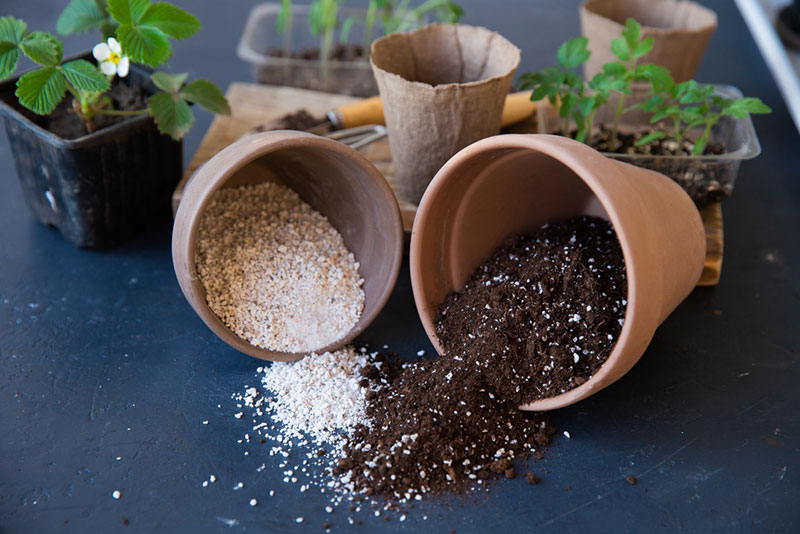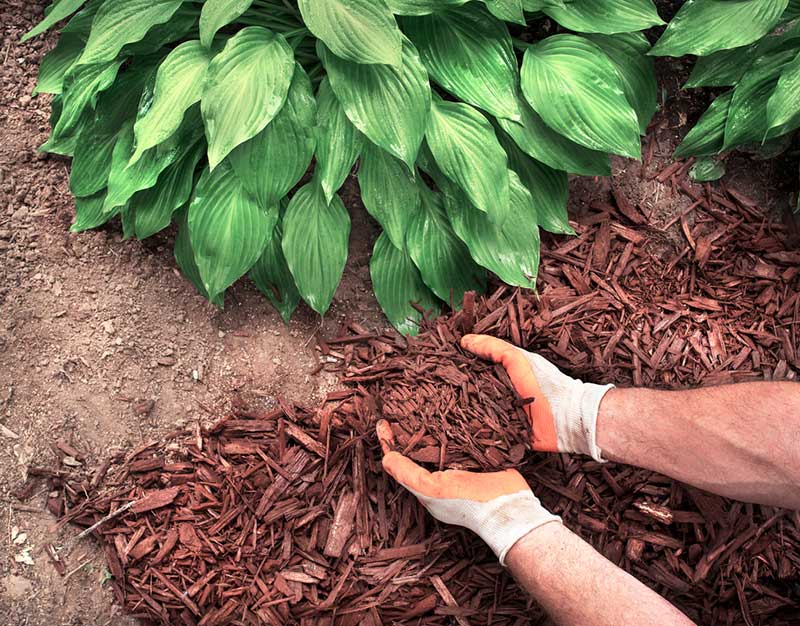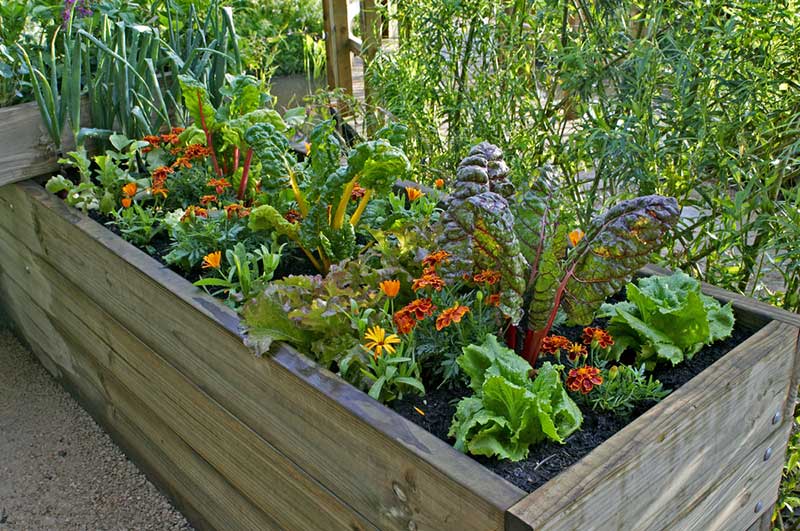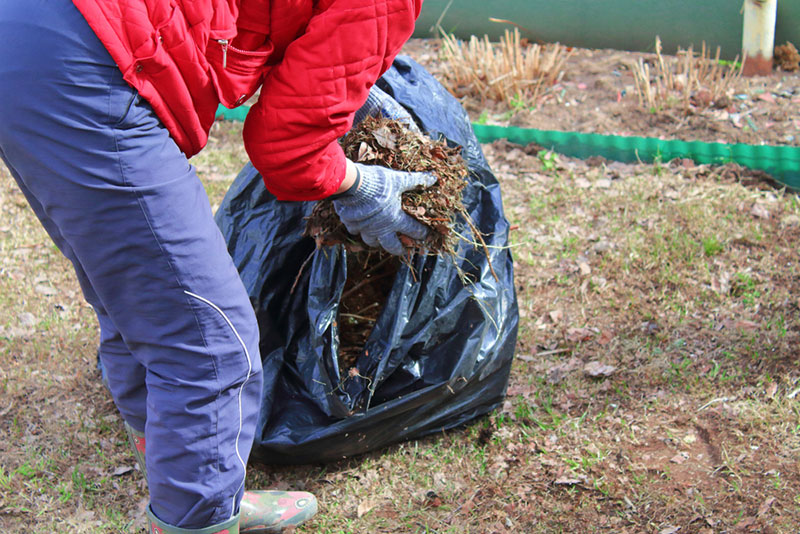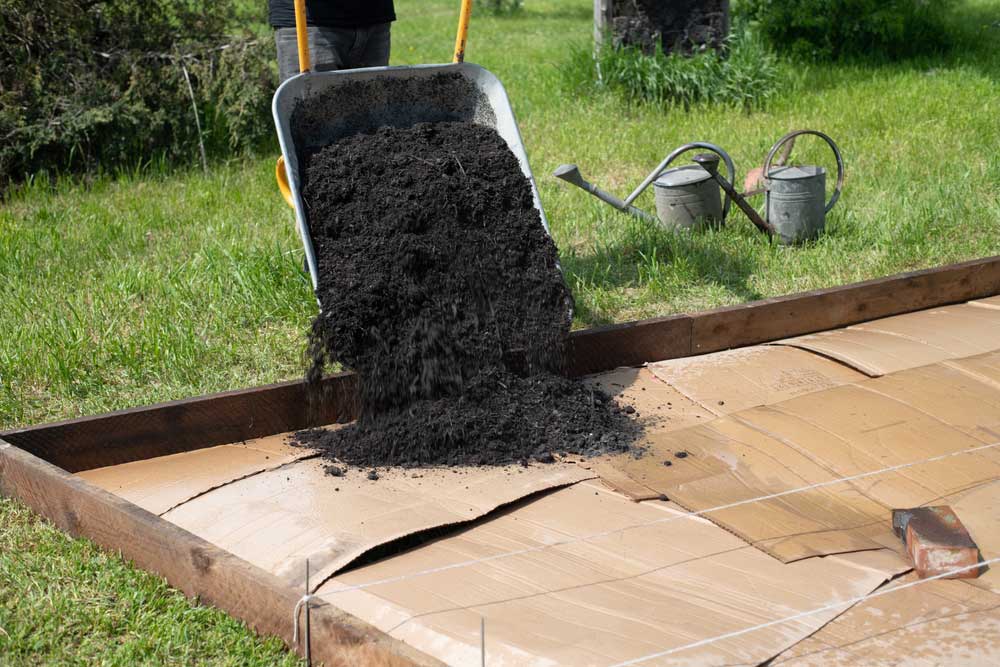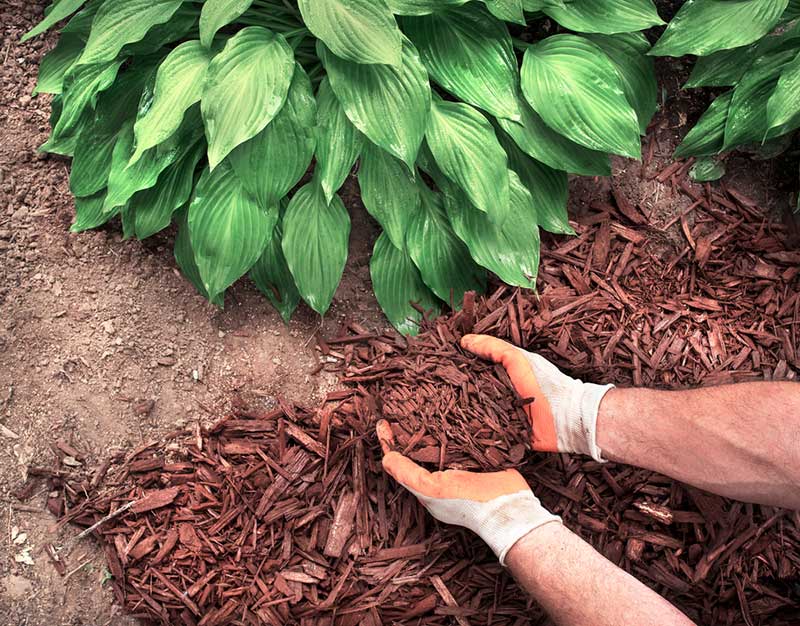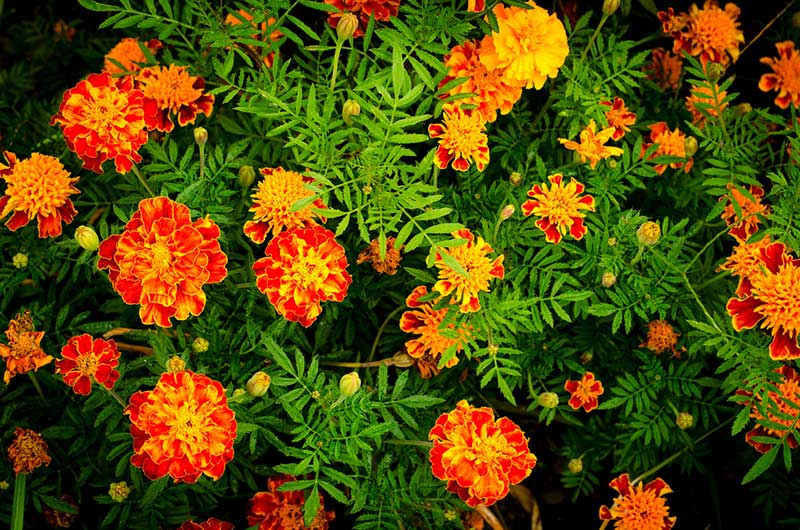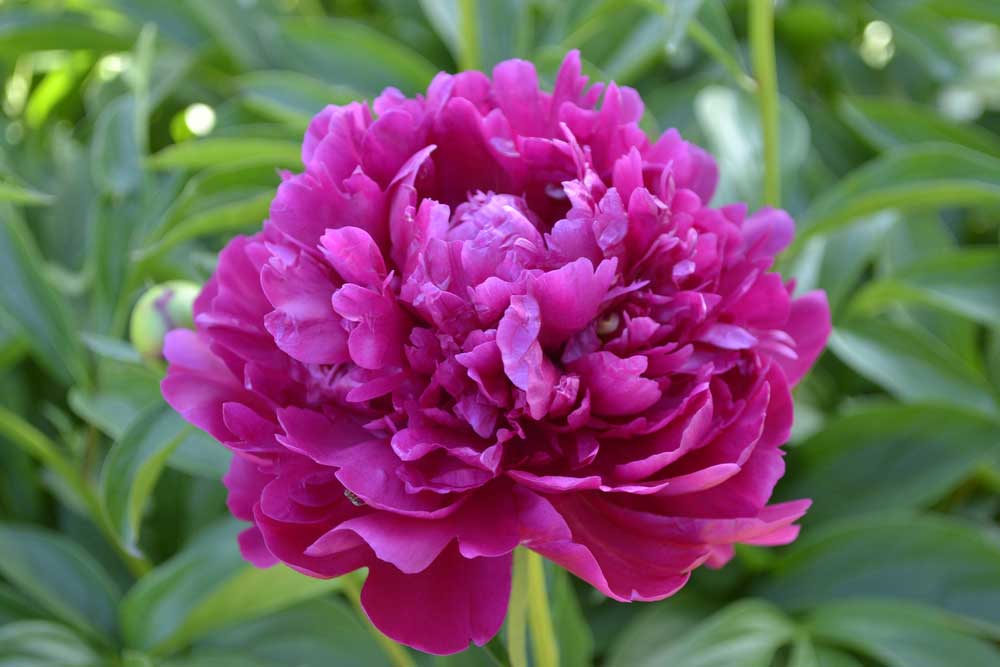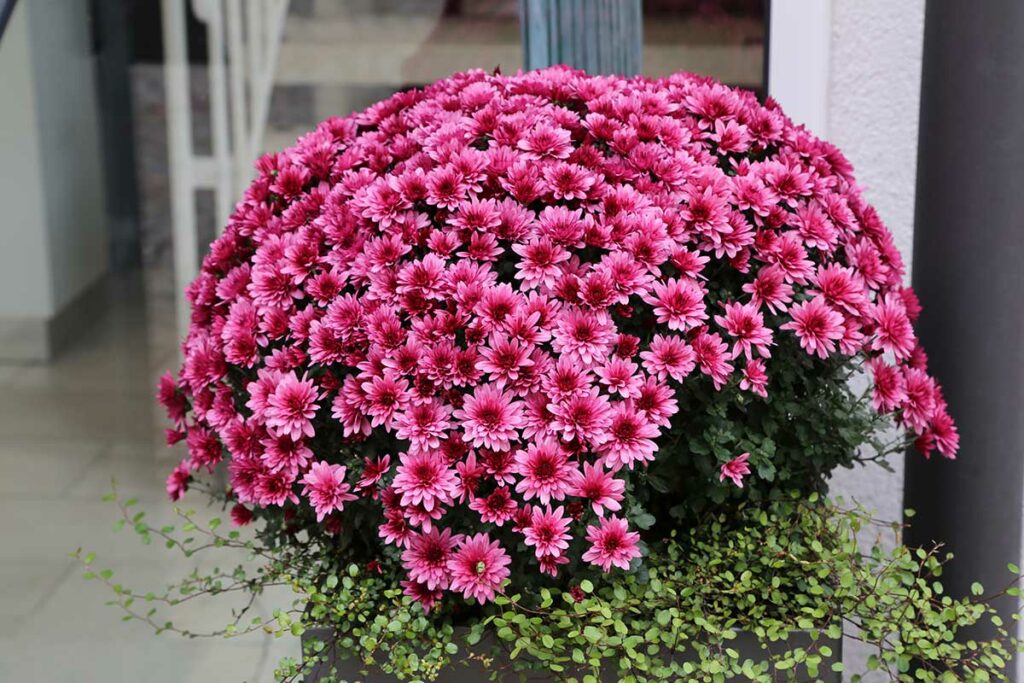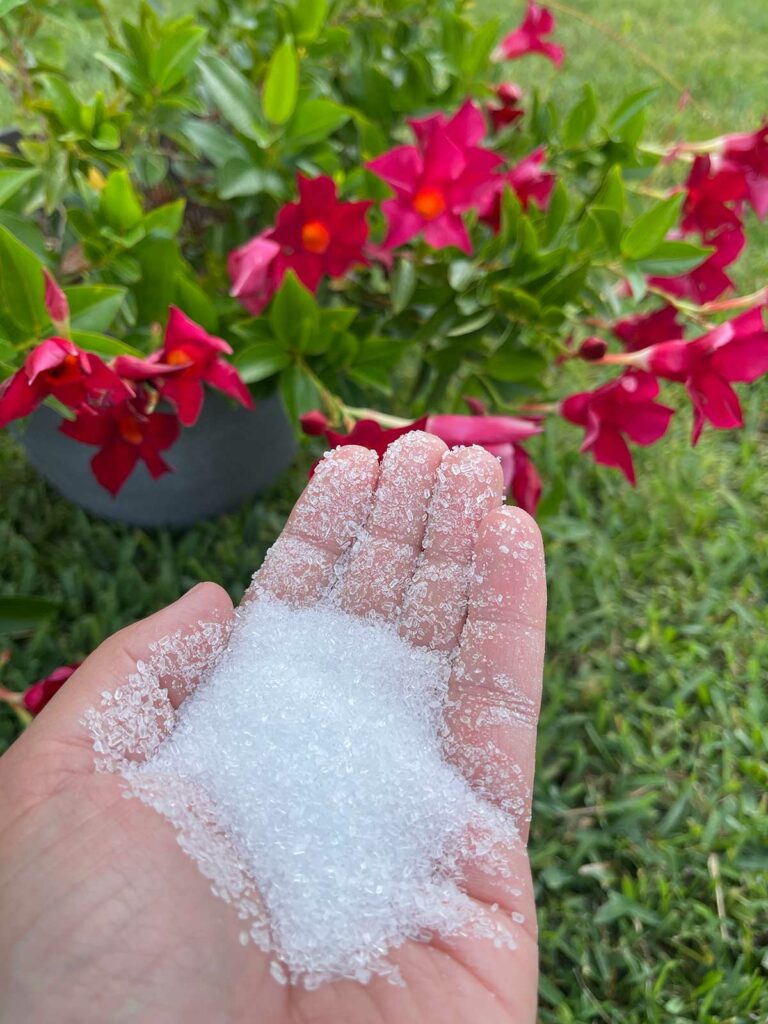
Imagine discovering a garden helper right within your own cupboards. Epsom salt, a common household item, has a long-standing tradition in the gardening world.
It’s not just for soothing sore muscles, it’s also a secret weapon for many gardeners. From enhancing a plant’s green color, improving flower blooming, to even making plants grow bushier, Epsom salt has been touted as a plant’s best friend.
But it’s not all roses and tomatoes. There are reasons why some gardeners might caution against the use of Epsom salts.
So, let’s embark on a journey to explore the benefits and potential drawbacks of using Epsom salt for plants. We’ll delve into the science, bust some myths, and arm you with the knowledge to make your garden truly flourish.
Understanding Epsom Salt and Its Properties
In your quest for a thriving garden, let’s delve into Epsom salt and its properties, which may play an instrumental role in your botanical success.
The Composition of Epsom Salt
Epsom salt, the layman’s term for magnesium sulfate, is a naturally occurring compound. It takes the form of solid white crystals, albeit its name would have you picturing something akin to table salt. However, unlike traditional salts that are sodium-chloride based, Epsom salt is rich in two vital plant nutrients: magnesium and sulfur.
It’s magnesium that’s at the center stage in Epsom salt’s performance as a plant supplement. This mineral plays a crucial role in photosynthesis—the process of turning light into energy in a plant. On the flip side, sulfur aids in the production of proteins, vitamins, and enzymes, fostering healthier and more well-nourished plants.
How Epsom Salt Benefits Plants
So how does this concoction of magnesium and sulfur line up to benefit your plants? For starters, magnesium promotes the production of chlorophyll, which not only gives plants their green hue but also drives photosynthesis. Sulfur, on the other hand, helps plants utilize necessary nutrients more efficiently, hence encouraging robust growth.
Epsom salt isn’t a one-size-fits-all solution. Its benefits are often most pronounced in plants known to have an affinity for extra magnesium. Some of these enthusiasts include your roses, tomatoes, and peppers that would relish the occasional dose of Epsom salt to rejuvenate their magnificence.
Bear in mind, Epsom salt is not a standalone remedy. It’s critical not to underestimate the importance of proper watering, pest control, and suitable growing conditions. However, when used wisely and appropriately, Epsom salt can indeed give your pantries a well-deserved boost, setting them off on a path towards verdant glory.
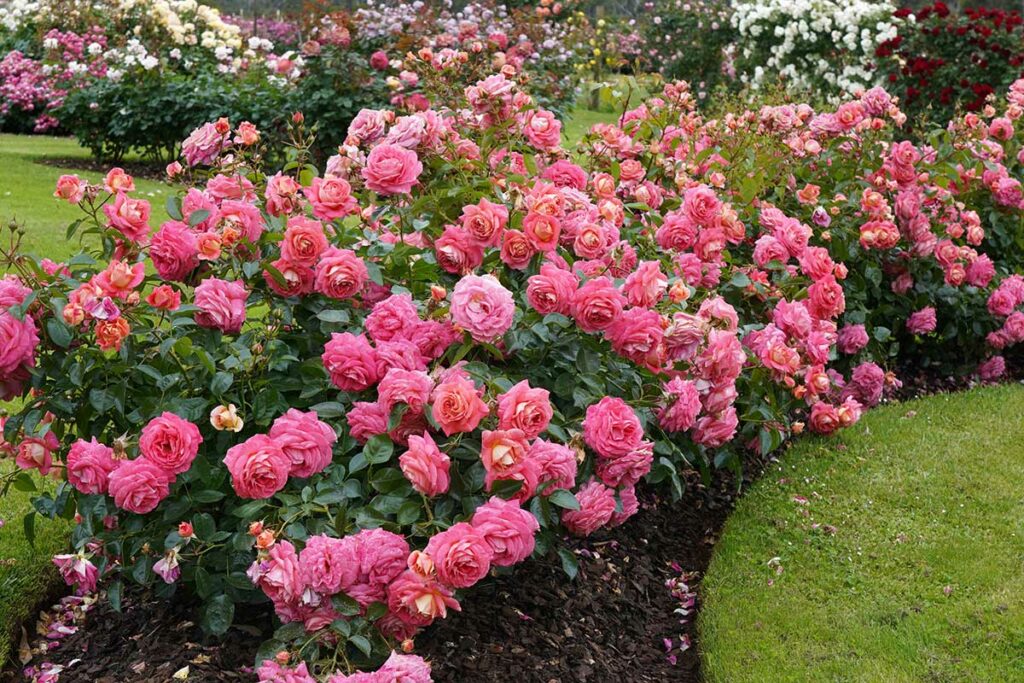
Identifying the Need for Epsom Salt in Your Garden
It’s essential to know when your plants might need Epsom salt and when it’s better to skip it. Check signs of possible issues linked to magnesium deficiency, and understand that Epsom salt isn’t always the answer.
Signs of Magnesium Deficiency in Plants
Observing your plants carefully allows you to spot potential signs of magnesium deficiency, which is one condition where Epsom salt might be beneficial. Specific plants show particular symptoms indicating distress. Magnesium deficiency tends to exhibit as yellowing leaves with green veins.
This symptom typically starts from the lower leaves and gradually affects the entire plant. Essentially, if your plant’s leaves begin to turn yellow but the veins stay green, it’s a good time to consider whether Epsom salt could help rejuvenate your plant.
When Epsom Salt Is Not Recommended
When it comes to using Epsom salt, there’s no one-size-fits-all approach. Overapplying might damage plants. It’s wise to use Epsom salt in moderation and only when necessary. Always dilute it before directly applying it on dry leaves. While the mineral supplement supports healthy growth, you shouldn’t expect Epsom salt to serve as a growth accelerator.
Generally, lawns rarely need Epsom salts. It’s advisable to conduct a soil test to measure magnesium levels before initiating any widespread application on lawns. If your tests indicate a magnesium deficiency, sparingly use Epsom salts, bearing in mind that it can disrupt nutrient balance if used excessively.
Practical Guide on How to Use Epsom Salt for Plants
Soil Application for Nutrient Boost
In working Epsom salt into your gardening practice, one approach is soil application, particularly great for addressing a magnesium-deficient lawn. Taking advice from the Epsom Salt Council, you’d start by spreading 3 pounds of Epsom salt over 1250 square feet of grass using a spreader tool. Alternatively, combine Epsom salt with water, creating a diluted solution to be applied easily through a hose or sprinkler system.
Remember, Epsom salt is highly soluble so, if overused, it can quickly seep out of your garden and become environmental pollution. Hence, moderation is key. Always adhere to the recommended quantity of application; no more, no less.
Foliar Spray for Quick Absorption
Another way to impart the benefits of Epsom salt directly to your plants is through a foliar spray method, especially if your plant type shows signs of magnesium deficiency such as yellowing leaves with green veins, smaller fruits, poor flowering, or stunted growth.
Get started by preparing a solution of one tablespoon of Epsom salts diluted in 4 cups of water for each foot of plant height. It’s best to apply this spray directly onto the leaves on cooler or cloudy days to prevent leaf scorch.
Be cautious though. If magnesium competes with calcium for plant absorption, plants with a calcium deficiency can end up suffering from root rot. To prevent leaf scorch, consider using a wetting agent and avoiding spray on hot, sunny days.
While Epsom salt can provide a nutrient boost, good gardening is still vital. That includes regular watering and weeding. Should you see signs of deficiency, or a soil test confirms a shortage of magnesium, don’t hesitate to give Epsom salts a try.
Dosage and Frequency: How Much and How Often
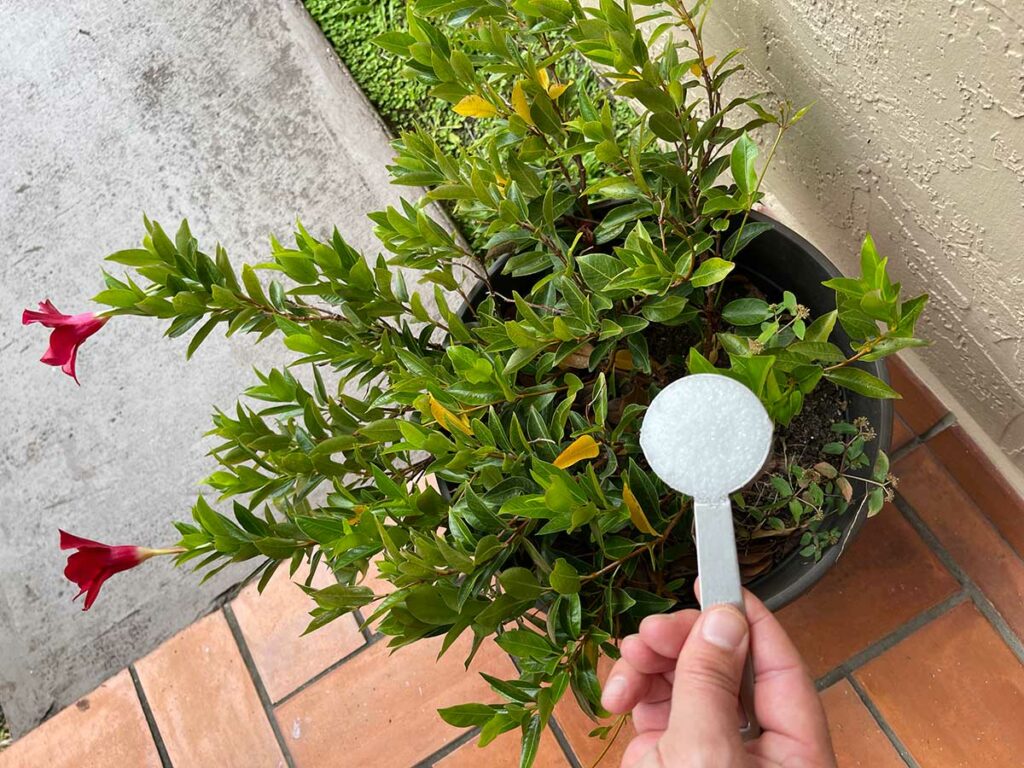
When crafting an efficient Epsom salt regimen for your garden, two essential factors to pay attention to are how much to use and how often to apply it. Let’s delve into the specifics for a clearer understanding.
Determining the Right Amount of Epsom Salt
The amount of Epsom salt to apply can depend significantly on the specific requirements of your plants and the current nutrient status of your soil. However, some general guidance can help you determine where to start.
For improving the overall lushness of your lawn, consider using a spreader to distribute three pounds of Epsom salt for every 1,250 square feet of lawn, as recommended by the Epsom Salt Council. This method ensures an-even dispersion.
Alternatively, consider diluting the Epsom salt in water and using a hose or sprinkler system for application.
For a foliar spray approach, a ratio of 1 tablespoon of Epsom salt mixed with 4 cups of water is often suggested for each foot of plant height.
It is crucial to dilute the spray properly to prevent potential damage to the leaves of your plants.
Timing Your Applications for Maximum Effect
As for the frequency of applications, every two weeks is a common interval for most garden plants. It’s important to spray it on cooler or cloudier days to reduce the risk of leaf scorch. Remember to factor in your local climate and recent weather conditions as well, since these variables can affect uptake and overall effectiveness.
If dealing with specific plant issues, such as tomato plants experiencing root rot due to a calcium deficiency, you may need to modify the frequency of Epsom salt application.
Keep in mind that magnesium – a primary component of Epsom salts – competes with calcium for absorption by the plant, and excessive application of Epsom salt could worsen the situation.
Remember, proper usage of Epsom salt is supposed to complement, not replace, good gardening practices such as regular watering, weeding, etc. Always monitor your plants’ responses closely and adjust your routine accordingly to ensure optimal plant health and growth.
Common Misconceptions About Epsom Salt Usage
There are a few entrenched misconceptions about the usage of Epsom salt in gardening that might need debunking. You might find clarity beneficial, and it could help prevent harming your plants inadvertently.
Debunking Myths and Understanding Limitations
Excessive Epsom Salt Doesn’t mean Better Results
One common misconception is that the more Epsom salt applied, the better the results. However, keep in mind that too much of anything can have negative impacts; Epsom salt is no exception.
For instance, applying directly onto foliage, regardless of quantity, can result in leaf scorch, caused by overconcentration of the salts.
Mitigate this by using a wetting agent and avoiding spraying on particularly hot, sunny days.
Epsom Salt Isn’t a Stand-Alone Solution for Calcium Deficiency.
Plants, such as tomatoes, often suffer from calcium deficiency, resulting in problems like root rot. A myth goes around suggesting Epsom salt as a solution. However, understand that Epsom salt can actually worsen a calcium deficiency situation. This is because magnesium and calcium compete for absorption by the plant.
Absence of Magnesium Deficiency Not a Hindrance to Epsom Salt Use
Some believe that absence of magnesium deficiency means there’s no need for Epsom salt. While it’s true that the salt’s main ingredient is magnesium, which helps in its deficiency, it’s not strictly a remedial measure. Applications of Epsom salt can still benefit plants as it promotes lush and bushier growth and more vibrant blooms.
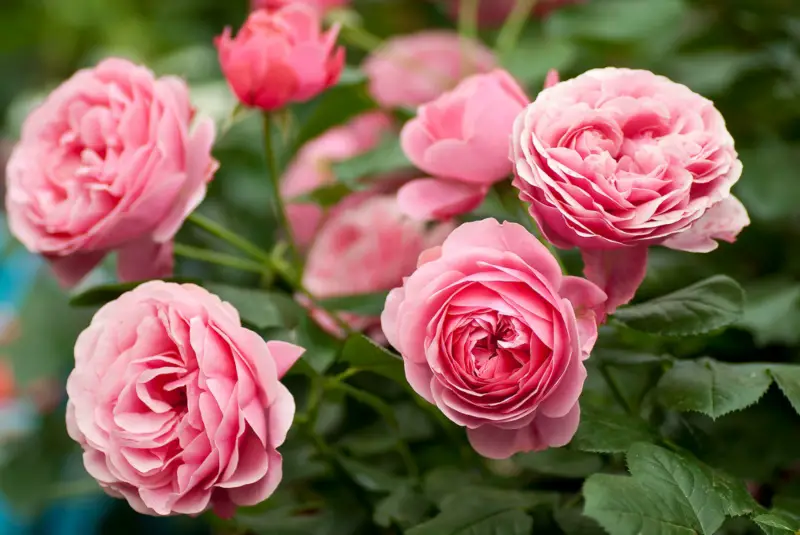
Benefits of Epsom Salt Not a Replacement for Good Gardening Practices
Using Epsom salt might provide some impressive results for your garden, but it can’t replace the fundamentals of good gardening practices. Ensure optimal watering, regular weeding, and careful attention to plant health alongside the prudent use of Epsom salt.
Over Solubility Isn’t Always A Boon
Some might enthuse over Epsom salt’s high solubility, promoting it as a feature that prevents overuse.
However, understand that excess salt washes away eventually, possibly resulting in pollution. Maintain an eco-friendly garden by using Epsom salt judiciously.
Safeguarding Your Garden: Precautions and Best Practices
To ensure the safety and health of your garden, it is crucial to understand potential risks and optimum practices, particularly while using solutions like Epsom salt. Let’s delve into two significant aspects: situations where overuse should be avoided and practices that work well alongside.
Situations to Avoid Overuse
While Epsom salt has beneficial properties, in certain scenarios, excessive usage can lead to unintended consequences. For instance, Epsom salts, being highly soluble, may wash away during heavy rain or excessive watering. Away from your garden, it transforms into a pollutant, not an ideal scenario for eco-conscious gardeners.
Another scenario relates to its effect on plants suffering from calcium deficiency. In such cases, Epsom salt could aggravate the situation rather than remedy it. This happens because calcium and magnesium – the primary component of Epsom salt – combat each other for absorption by the plant. Consequently, Epsom salt may worsen conditions like root rot prevalent in tomatoes. The thumb rule? Keep the application under check consistently.
Direct application onto foliage is another situation to circumvent as Epsom salts can trigger leaf scorch. To mitigate this, use a wetting agent and steer clear from spraying during hot, sunny days.
Complementary Practices for Plant Health
While Epsom salt aids plant health, it ain’t a panacea for all gardening issues. An ecosystem thrives on balance, and good gardening practices provide this balance.
Proper watering, and regular weeding are irreplaceable practices which Epsom salt complements, not replaces.
In response to magnesium deficiency, you can add Epsom salts directly to a watering can and apply it around the root zones of plants.
But remember, it isn’t a substitute for routine nourishment plants receive from the soil.
Want to tackle larger garden areas? Employ a hose-end sprayer with an Epsom salt solution to make the task manageable. But, again, it doesn’t replace necessary practices like proper soil conditioning or the employment of fertilizers.
So remember, while Epsom salt is a handy tool in your gardening arsenal, it works best when used in conjunction with other best practices.
By realizing when to curb its use and by coupling your Epsom salt usage with other horticultural rainbow practices, you set your garden up for lush success.





